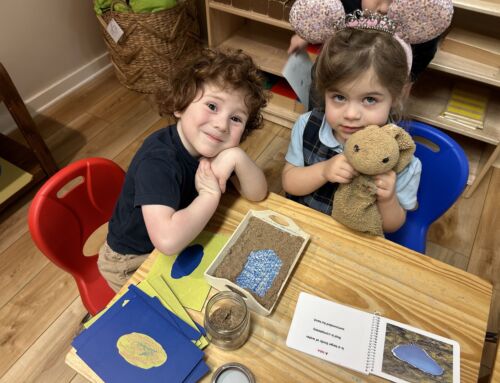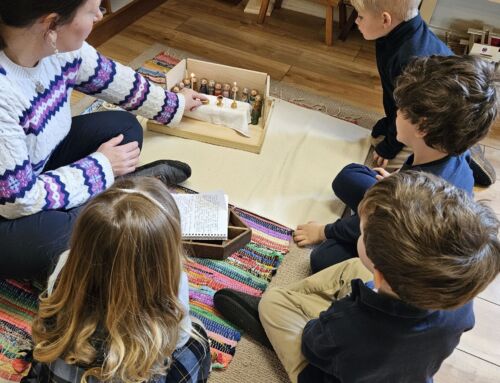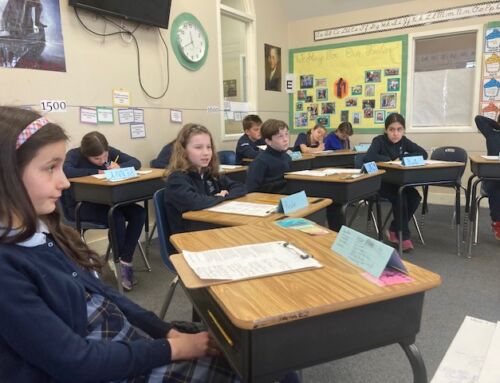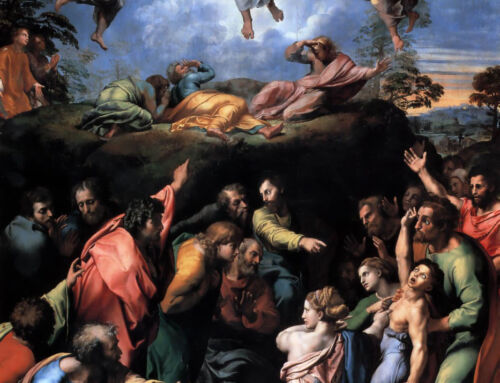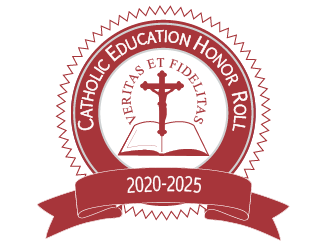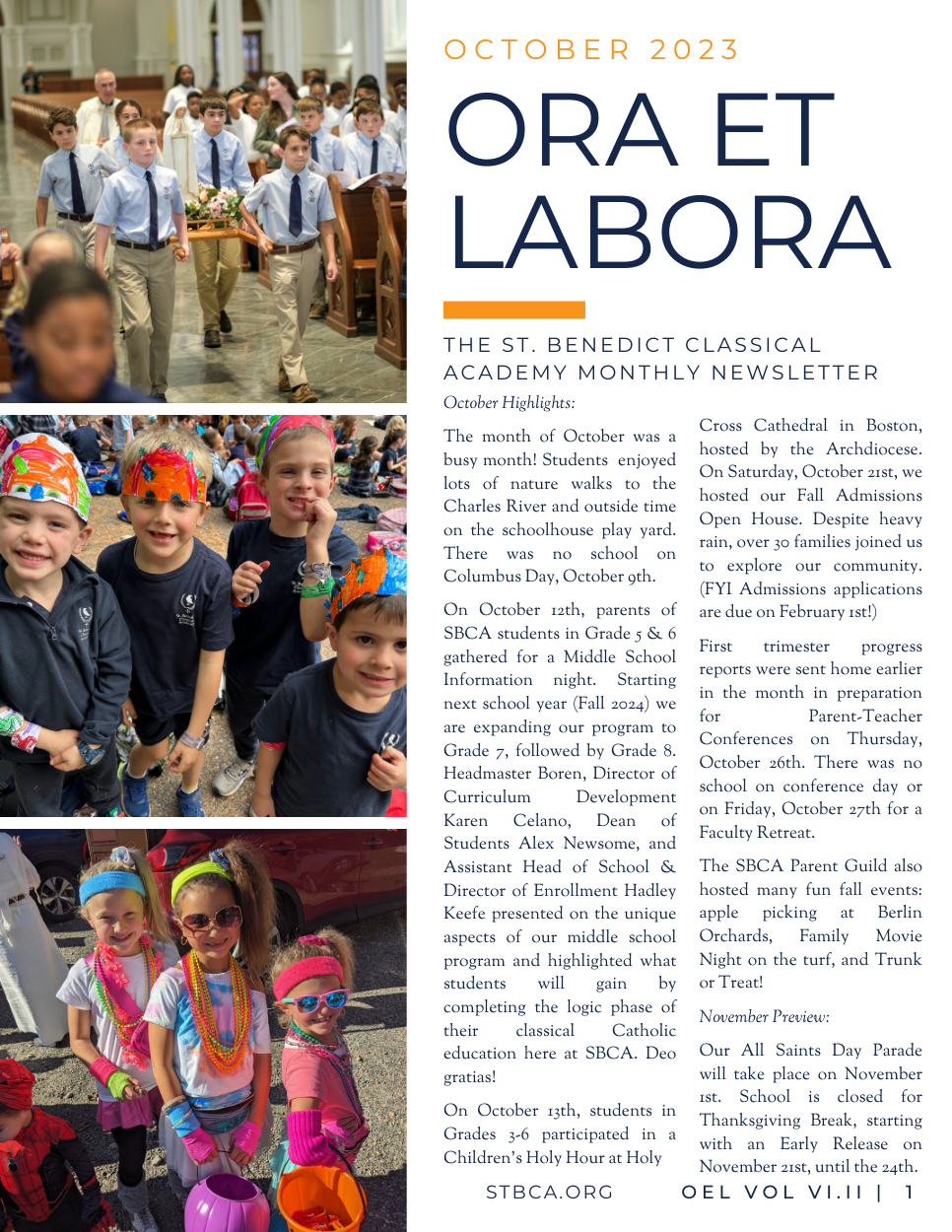Marion Montgomery in his novel, The Truth of Things: Liberal Arts and the Recovery of Reality, affirms that education is “the preparing of the mind for the presence of our common inheritance, the accumulated and accumulating knowledge of the truth of things.” At St. Benedict Classical Academy, we often speak about the truth that we are standing on the shoulders of giants, and consequently why it is so important for our students to look back on these cultural giants and develop an appreciation for who and where the information they are learning has come from. This practice adds a depth to their education, nourishes their imagination and prepares them to spend a lifetime seeking truth.
In sixth grade, one way students contemplate the truth revealed to us by our cultural giants is through their study of math. Mathematics reveals to us the beauty of God’s Creation, and can lift our hearts and minds to Him who is Beauty itself. Students discover this by participating in various math history projects woven throughout the school year. In the fall students study more recent math history by examining the stock market and participating in an investment and personal finance project. In the spring, students will study several famous mathematicians from history in order to reflect on their contributions to the greater field of Mathematics. Each year my students enjoy making connections between what we have studied in our lessons at SBCA and what these scholars articulated hundreds, if not thousands, of years ago.
One of my students’ favorite lessons is one we recently participated in before Thanksgiving break – the study of the Italian mathematician Fibonacci, the Fibonacci sequence and the remarkable connections these numbers have to art, architecture and nature. The Fibonacci sequence is a series of numbers starting with 0 and 1, in which each number is the sum of the two that precede it (0, 1, 1, 2, 3, 5, 8…). We learned about Fibonacci’s discovery of these numbers, what patterns can be found within the sequence, and about other discoveries made in the field of mathematics at this time in history. We then explored the geometric construct of a “golden spiral,” which precedes from the sequence itself. This spiral has been deemed by many as “one of the defining characteristics of objective beauty,” and can be seen in nature (flowers, pinecones, hurricanes, galaxies and even parts of the human body), architecture (The Great Pyramid of Giza, The Parthenon, and Notre Dame), and art (Leonardo da Vinci’s “Annunciation” and Raphael’s “The School of Athens”). After our initial introduction to the Fibonacci numbers and some of their incredible occurrences in the natural world, my students began their own art project to further explore the golden spiral. (Some of their work with the geometric construction of a golden spiral can be seen in the pictures above.)
AUTHOR: Alyssa Powers, Grade Six Teacher

